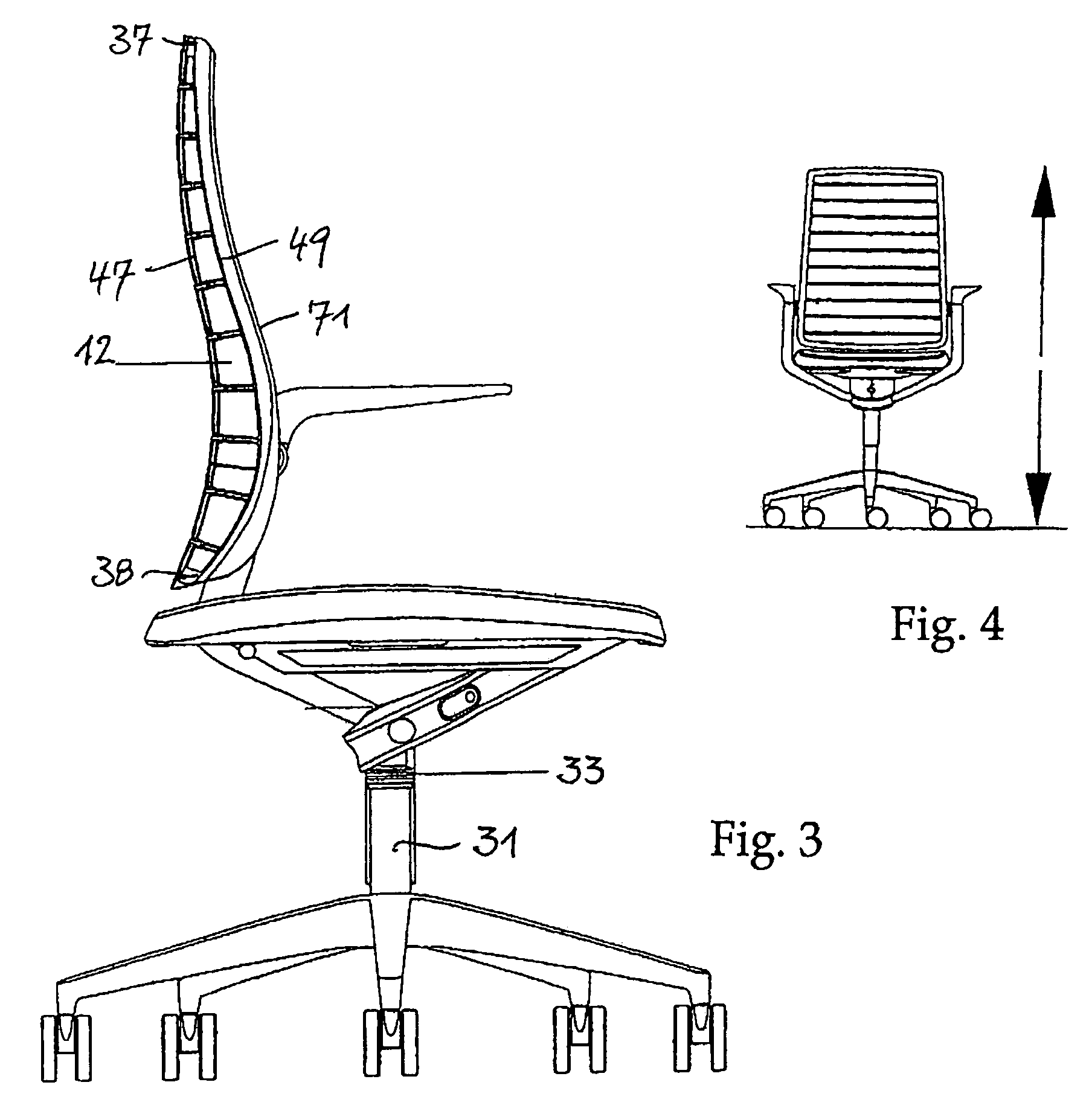Backrest for seats and chairs having pressure and tensile elements
a backrest and seat technology, applied in the field of seats and chairs, can solve the problems of spinal column deformation and the geometry of the supporting structure, and achieve the effect of preventing lateral bending of the seat back
- Summary
- Abstract
- Description
- Claims
- Application Information
AI Technical Summary
Benefits of technology
Problems solved by technology
Method used
Image
Examples
Embodiment Construction
[0100]The plastic profile 10 illustrated in FIG. 1 exhibits a plurality of individual chambers 12, whereby lamellar bars 14 are formed between these chambers and in some of the bars (in FIG. 1 in every second bar) further slots are provided for receiving reinforcing strip-shaped elements 16, which protect the plastic profile against deformation around a vertical axis.
[0101]A rear reinforcement 18 is formed through second plastic lamellas 19 arranged individually on top of one another, vertically aligned and extending horizontally, which by means of PVC rubber sections 20 located in-between do not offer any resistance to the body-related deformation of the seat-back around horizontally tilting axes.
[0102]Instead of the plastic lamellas proposed a continuous lamella shell could also be used as an alternative.
[0103]The rubber sections 20 of each lamella 19 in a preferred embodiment exhibit rubber tongues 22, which engage in corresponding slots 24 of the plastic profile 10. Mounting ton...
PUM
 Login to View More
Login to View More Abstract
Description
Claims
Application Information
 Login to View More
Login to View More - R&D
- Intellectual Property
- Life Sciences
- Materials
- Tech Scout
- Unparalleled Data Quality
- Higher Quality Content
- 60% Fewer Hallucinations
Browse by: Latest US Patents, China's latest patents, Technical Efficacy Thesaurus, Application Domain, Technology Topic, Popular Technical Reports.
© 2025 PatSnap. All rights reserved.Legal|Privacy policy|Modern Slavery Act Transparency Statement|Sitemap|About US| Contact US: help@patsnap.com



